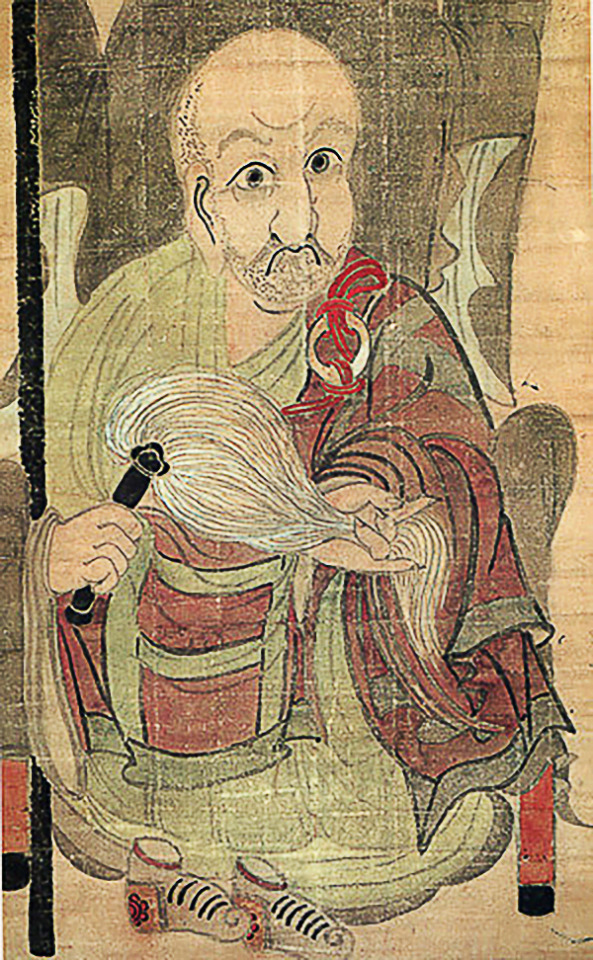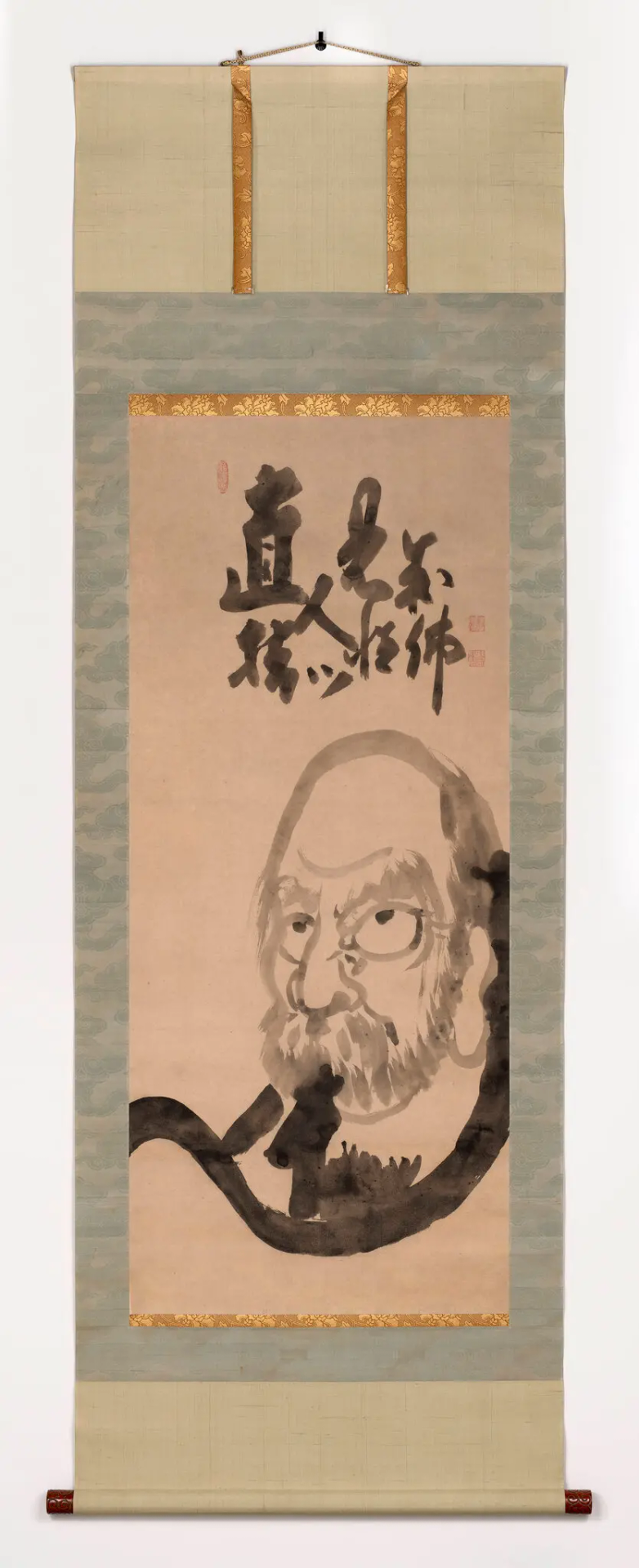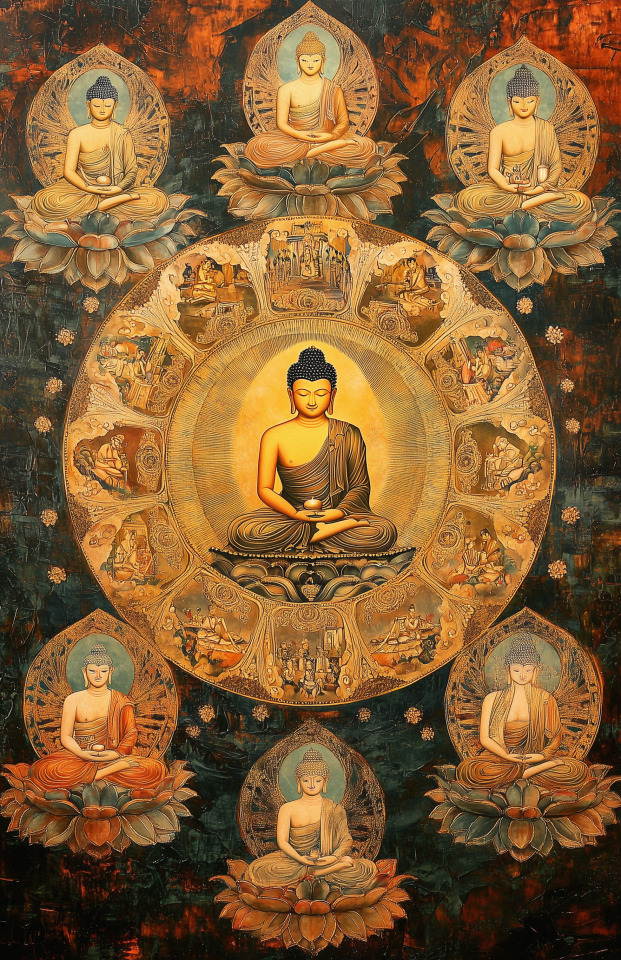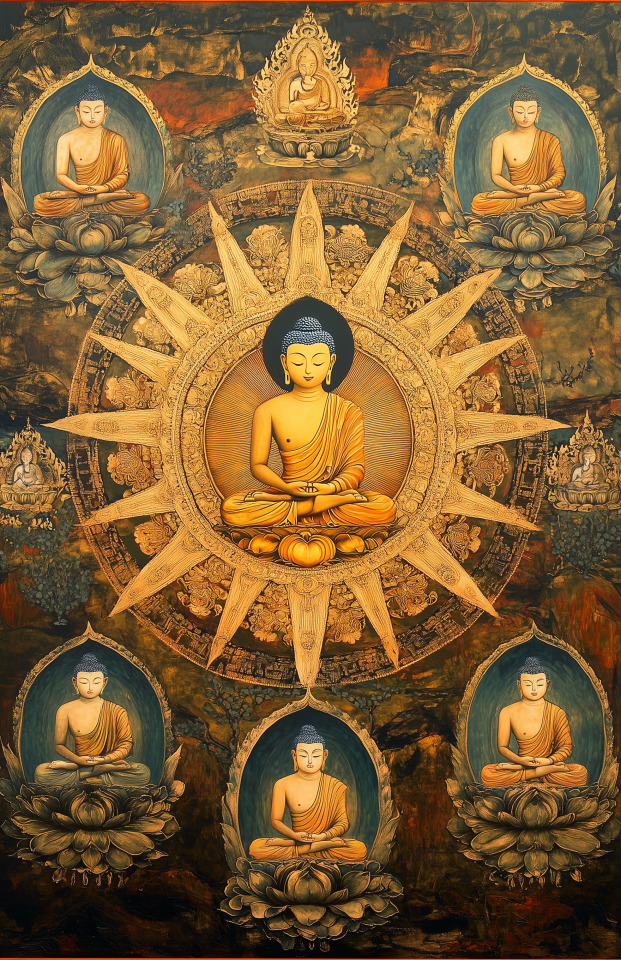#hakuin
Explore tagged Tumblr posts
Text

Enter the bagpipes.
7 notes
·
View notes
Text
The Hymn of Zazen
Recently I stumbled a neat bit of Buddhist liturgy in the Rinzai Zen tradition called the Hakuin Zenji Zazen Go-Wasan (白隠禅師坐���御和讃), or more simply the Zazen Wasan (坐禅和讃). This means “The Hymn of Zazen [of Zen Master Hakuin]”. In English it is sometimes called the “Song of Zazen”.1 Rinzai Zen is a somewhat unusual sect in Japanese Buddhism because although it was founded in the 12th century by…

View On WordPress
3 notes
·
View notes
Text
"Upon attaining satori, if you continue to devote yourself to your practice single-mindedly, extracting the poison fangs and talons of the Dharma cave, tearing the vicious, life-robbing talismans into shreds, combing through texts of all kinds, Buddhist and non-Buddhist alike, accumulating a great store of Dharma wealth, whipping forward the wheel of the Four Universal Vows, and pledging yourself to benefit and save all sentient beings while striving every minute of your life to practice the great Dharma giving, and having nothing - nothing - to do with fame or profit in any shape or form - you will then be a true and legitimate descendant of the Buddha patriarchs. It's a greater reward than gaining rebirth as a human or a god."
- Wild Ivy: The Spiritual Autobiography of Zen Master Hakuin
2 notes
·
View notes
Text
"Two hands clap and there is a sound; what is the sound of one hand?"
-Koan, attributed to Hakuin Ekaku, 1686 - 1768
23 notes
·
View notes
Text
Morning Meditation — Nobody likes ordinary, commonplace things.
Morning Meditation — Nobody likes ordinary, commonplace things. https://wp.me/pFy3u-9uZ
‘Nobody likes ordinary, commonplace things. And that is quite natural. A good medicine is bitter to the taste, but it wakes us up. It makes us open our eyes. And waking up spoils our dreams.’ Zen Master Hakuin Love-lies-bleeding. On our Twitter account, Buddhism Now @Buddhism_Now, most mornings we post a ‘morning meditation’ like the one above. On the net, of course, it’s morning, afternoon,…
4 notes
·
View notes
Text

Ekaku Hakuin (1685-1768)
Hamaguri-kan’non
Here, the Kan’non Goddess of Mercy, who has appeared from inside a hamaguri clam, is preaching to creatures of the sea, including the Dragon King, fish and clams. The Hamaguri-kan’non is one of the 33 Kan’non. Only the clam and the Kan’non are usually depicted. The inclusion of the Kan’non’s audience is an original concept of Hakuin. It is based on the essence of the Kan’non-gyo Sutra contained within the Lotus Sutra in which the Kan’non appears in a form appropriate to her audience to save the various living beings of this world. The words of praise are derived from a passage from the Kan’non-gyo Sutra and mean “With compassionate eyes, she looks at all living beings, and good fortune gathers, boundless like the sea.” The work is believed to have been painted when Hakuin was in his early 70s.
白隠慧鶴(1685~1768)
蛤蜊観音図 はまぐりかんのんず
蛤蜊から出現した観音が、龍王をはじめ魚や貝など海の生きものたちに説法し��いる。蛤蜊観音は三十三観音の一つで、通常は蛤蜊と観音のみを描くが、このような聴衆を描き込むのは白隠の創作である。観音がこの世のさまざまな衆生のために、その衆生に応じた姿となって現れ救済するという『法華経』普門品の主旨に基づいている。賛の「慈眼視衆生、福壽海無量」も同経の一節に由来するが、「聚」字を「壽」字に変えている。白隠70代前半の作と推定される。
14 notes
·
View notes
Text
Not knowing how near the truth is, we seek it far away." Hakuin Ekaku
12 notes
·
View notes
Text

"Two longtime painters recently told me how joyful their studio practices had become in their 40s once they took their minds off their ambitions, stopped trying to impress anyone, and just let the paintings paint themselves. I’ve been dabbling with working that way myself, so I was thrilled to find the memorable demonstrations of unburdened artistic spontaneity that are scattered in 'None Whatsoever: Zen Paintings from the Gitter-Yelen Collection' at the Japan Society."
-- Zen Paintings at the Japan Society.
4 notes
·
View notes
Text
Not knowing how near the truth is, we seek it far away. - Hakuin Ekaku
2 notes
·
View notes
Text

🎨✦
1 note
·
View note
Text


Vairocana | The Five Wisdom Buddhas Talon Abraxas
Not all Buddhas were considered flesh and blood or walked the earth. The Five Wisdom Buddhas are the Wisdom states as persons. The body of Vairocana is the body of the True Dharma.
The Five Wisdom Buddhas arose during the Mahayana development in India and were taken up by Tantric Buddhism. In Japan they appear in Shingon. These Buddhas differ from the Buddhas who appear in the lineage or who are said to have walked the earth at a certain time in a certain place as they represent principles of Mahayana teaching. They are sometimes called ‘Meditation Buddhas’ to distinguish them and because they may only be encountered in the states of meditation that form their bodies.
Vairocana is called the ‘Sun Buddha’ and is the ‘First’ (Skt. Adi) or ‘Primoridial’ Buddha and sits in the central place of the Five Wisdom Buddhas mandala surrounded by the four other Wisdom Buddhas who sit at the cardinal points. His name in Japanese is Dainichi Nyorai – The Buddha of Universal Illumination. His names and attributes are all connected with light and illumination, rays of life-giving power that initiate, nourish and sustain as the sun does all life on earth.
In Mahayana teaching his body is the Body of the Dharma (Skt. Dharmakaya), and is synonymous with such terms in Zen as ‘True Nature’, ‘True Face’ and ��Buddha-nature’. His nature is emptiness (Skt. Sunyata), the ‘unborn’ of which the Buddha spoke in the Pali Canon, without which that which is born and created could not come into being.
Vairocana first appeared in the Brahmajala Sutra, a 5th Century manuscript written in Sanskrit and translated into Chinese by Kumarajiva. The title translates into English as Brahma’s Net Sutra. This relates to the analogy used by the Buddha who described a net that spreads throughout the universe in the three dimensions of space: length, breadth and depth. Where three strands meet there is a jewel to hold them in place like a dewy spider’s web. Each jewel reflects both itself and all the other jewels in the net simultaneously. The feel of this image is used to point towards the reality of emptiness, the true nature of the Dharmakaya – which is the body of Vairocana.
“Now, I, Vairocana Buddha, am sitting atop a lotus pedestal; on a thousand flowers surrounding me are a thousand Sakyamuni Buddhas. Each flower supports a hundred million worlds; in each world a Sakyamuni Buddha appears. All are seated beneath a Bodhi-tree, all simultaneously attain Buddhahood. All these innumerable Buddhas have Vairocana as their original body. “
-The Brahma’s Net Sutra
As the primordial principle Vairocana speaks outside the phenomenal world where all time is simultaneous. Although in the phenomenal world he has this or that name and is portrayed using this or that hand position (mudra), wearing certain garments and headdress, in truth he is beyond conceptual imagination and yet is ever present in each form, as Master Hakuin wrote: ‘‘like salt in seawater or glue in paint.”
In Shingon Buddhism he is represented by the Sanskrit letter ‘A’ which expresses life & death; emergence & return.
The mantra associated with Vairocana is:
Om a-vi-ra-hûm-kham vajradhâtu vam (Skt.) Om All Pervading One; Imperishable One
76 notes
·
View notes
Quote
What state of mind is it that allows for the concentration of luxury in one person, while causing many to suffer?
Zen Master Hakuin : Selected Writings, Yampolsky
6 notes
·
View notes
Text



This very place is the Lotus Land; this very body, the Buddha. --Zen Master Hakuin
Golden Lotus by Olivia Fraser
239 notes
·
View notes
Video
youtube
Bunkamura「白隠展 HAKUIN 禅画に込めたメッセージ」ビジュアルツアー
0 notes
Text

The monkey is reaching
For the moon in the water.
Until death overtakes him
He’ll never give up.
If he’d let go the branch and
Disappear in the deep pool,
The whole world would shine
With dazzling pureness.
- Hakuin Zenji (1685-1769)
I love this poignant art showing the monkey trying to grab a reflection of the moon in the water. He longs for the light but won’t let go of the branch. Just like us humans — wanting to be enlightened yet hanging on to things that don’t serve us.
Hakuin is teaching us across the centuries, painting and poem illuminating the way clinging to what seems safe gets in the way of a clearer, more profound understanding of reality, an endlessly deep pool where all the ideas of me and you can disappear.
🔷…
27 notes
·
View notes